Abaqus Rock analysis and its goals
Rock analysis is a process that involves studying the mechanical behavior of rock masses under various loading conditions, such as seismic events, excavation, and blasting. The main goals of rock analysis are to evaluate the stability and integrity of rock structures, predict potential failure modes, and develop effective mitigation strategies. Rock analysis is vital in the design and planning of infrastructure projects, such as tunnels, underground constructions, and mining operations, to ensure their safety and longevity. It also plays a crucial role in assessing the seismic hazard of an area and evaluating the potential impact of earthquakes on the built environment. The outcomes of Abaqus rock analysis are used to identify potential risks and to optimize the design and construction of rock structures, with the ultimate goal of ensuring the safety of people and infrastructure.
Rock simulation in Abaqus
Rock simulation in Abaqus involves using the finite element analysis software to model and analyze the mechanical behavior of rock masses under various loading conditions. For example, impact simulation on a rock or explosion simulation inside a rock. Impact simulation on a rock and explosion simulation inside a rock in Abaqus are two types of analyses that involve modeling and analyzing the mechanical behavior of rock masses under dynamic loading conditions. In impact simulation, the focus is on studying the response of rock to impacts from various objects, such as projectiles or vehicles. The simulation typically involves using explicit dynamic analysis techniques, such as the smoothed particle hydrodynamics (SPH) method, to accurately capture the complex behavior of the rock and the impacting object.
In explosion simulation inside a rock, the focus is on studying the mechanical response of the rock to an internal explosion, such as in mining or blasting operations. This type of simulation involves modeling the explosion using the JWL equation of state and modeling the rock using advanced material models, such as the JH-2 model or the Mohr-Coulomb model. Abaqus provides a range of tools and features to simulate both impact and explosion on rock masses, including contact mechanics, boundary conditions, and advanced material models. The outcomes of these simulations can be used to evaluate the stability and integrity of rock structures, predict potential failure modes, and develop effective mitigation strategies.
Workshop 1: Simulation of high-velocity impact on Granite stone
The material’s constitutive relationship is not simply a set of regulations derived from experimental data, but it also plays a crucial role in numerical simulations. Its purpose is to reflect a material’s physical and mechanical properties as accurately as possible to improve the accuracy of numerical results. Currently, there is a growing demand for numerical simulations, leading to the development and constant optimization of various constitutive models for materials. In particular, for materials under loading conditions of large strains, high strain rates, and high pressures (LHH), dynamic constitutive models typically involve more complicated physical property parameters and sensitive coefficients, such as various rate effects and strength coefficients. Consequently, determining these parameters has become increasingly difficult.
Initially designed to simulate the behavior of brittle materials, particularly ceramics, the JH-2 constitutive model incorporates softening properties and includes pressure-dependent strength, damage, and fracture, as well as considerable strength post-fracture, bulking, and strain rate effects.
According to the JH-2 constitutive model, the strength of a material, whether intact or fractured, is influenced by pressure, strain rate, and damage. The model represents the strength’s dependence on these parameters through a set of constants, which are obtained from standard dynamic and quasi-static measurements.
This simulation study examines the impact of a rigid projectile at high velocity on a granite stone. An explicit step is utilized, with a general contact inp file, to account for internal damage and erosion. The analysis indicates a visible damage variable for the granite during the simulation.
Read More: ABAQUS Standard or ABAQUS Explicit?
Workshop 2: TNT explosion simulation inside a rock
This tutorial explores using the coupled finite element method and smoothed particle hydrodynamics to simulate rock fracturing under blast conditions. Despite the rapid advancement of excavation technologies, drill and blast techniques remain popular in hydro power, transportation, and mining due to their adaptability to various geological conditions. In recent years, numerical simulation has emerged as a promising approach to studying blast and wave propagation thanks to the development of explosion theory and computer technology. Researchers around the world have employed different numerical methods to examine stress wave propagation in rock masses.
Both the granite rock and TNT are modeled as three-dimensional parts. The JWL equation of state is utilized to model the TNT, a high-explosive material, and convert the chemical energy resulting from the explosion into mechanical pressure. The JH2 model is used to model the behavior of granite under intense blast loads.
For this type of analysis, a dynamic explicit step with general contact is deemed suitable. A fixed boundary is assigned to the rock. To model the smoothed particle hydrodynamic mesh from the TNT part, CAE and input files are used to define PC3D elements. The quality of the mesh has a significant impact on the results and the propagation of radial cracks.
After the explosion, it is possible to obtain the damage parameter along with other results such as stress, plastic strain, and more.
It would be useful to see Abaqus Documentation to understand how it would be hard to start an Abaqus simulation without any Abaqus course.
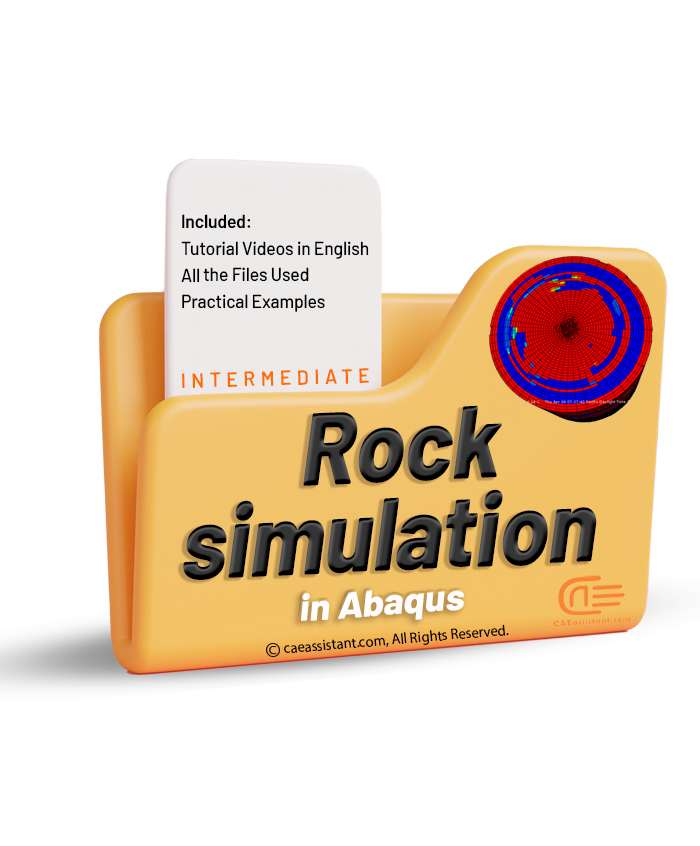
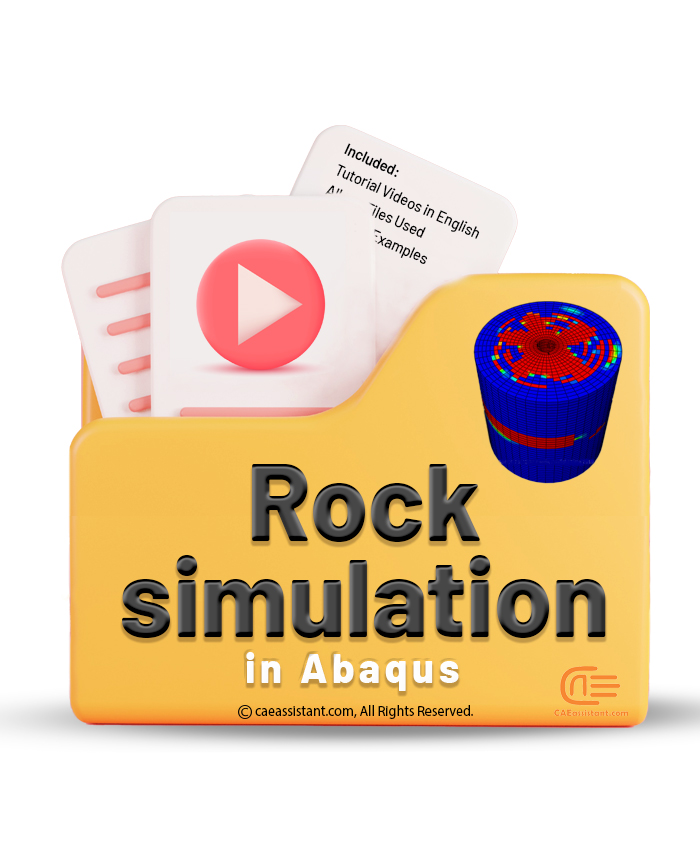

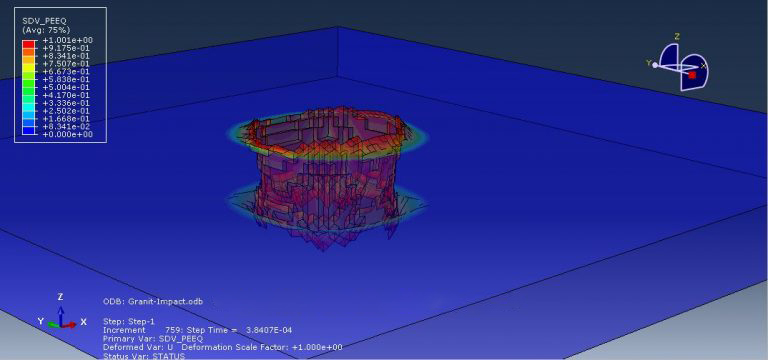
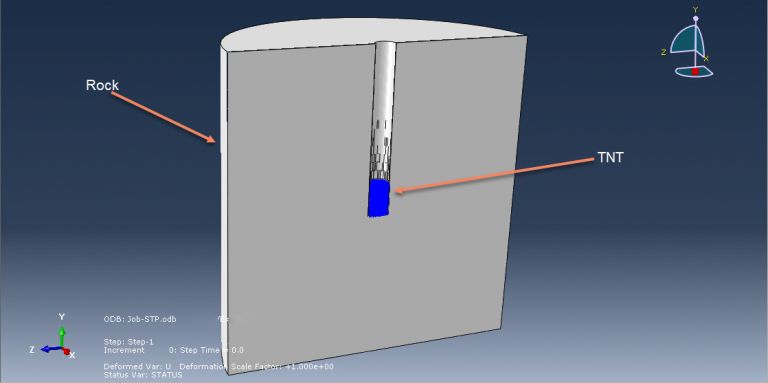
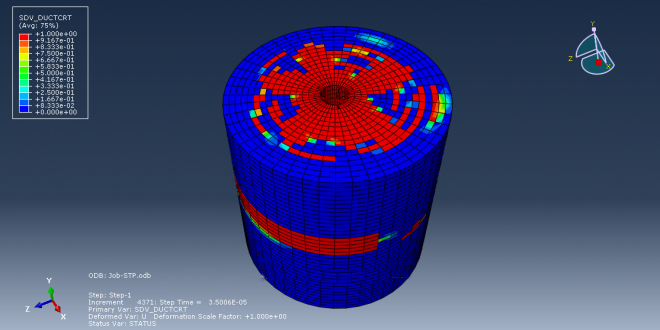
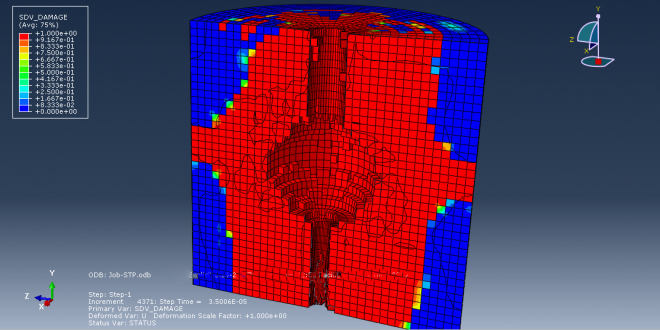
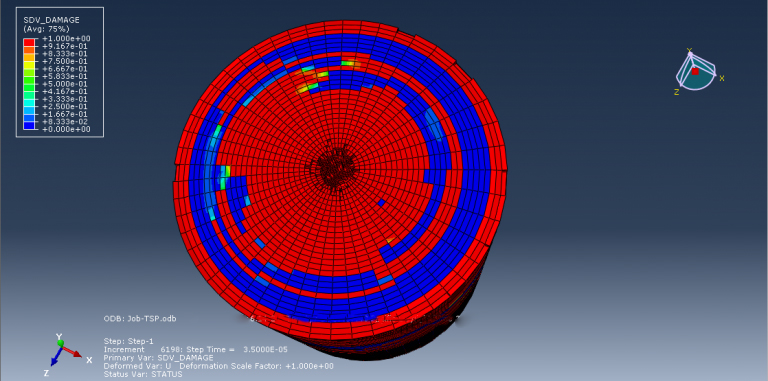

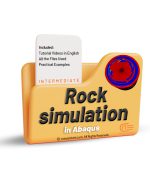
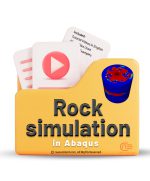








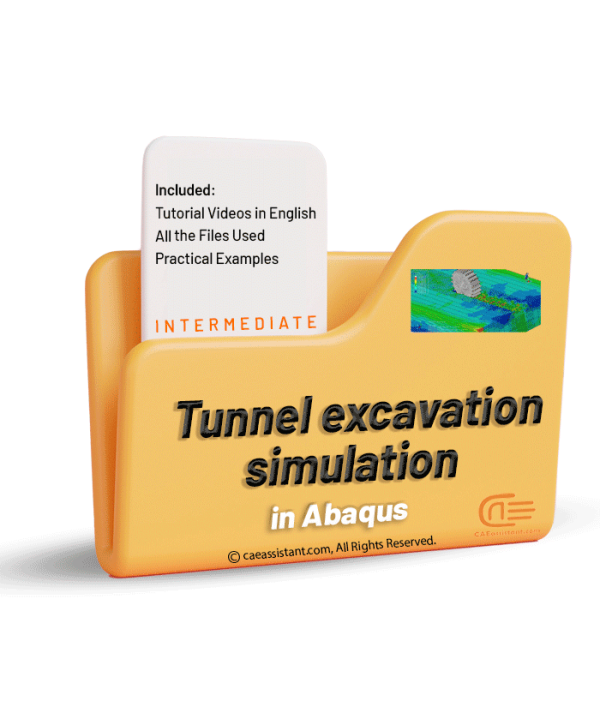
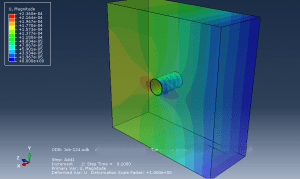
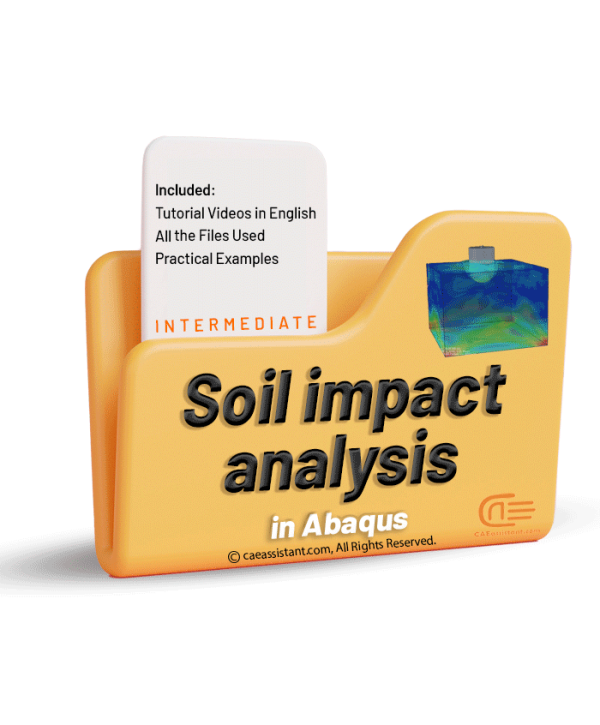
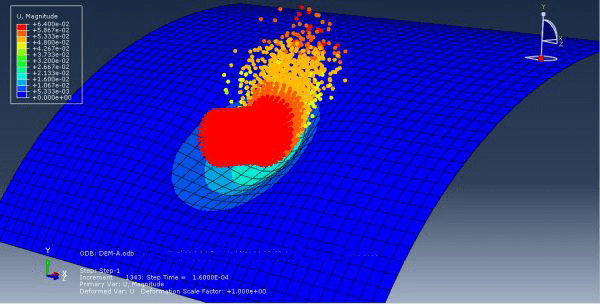
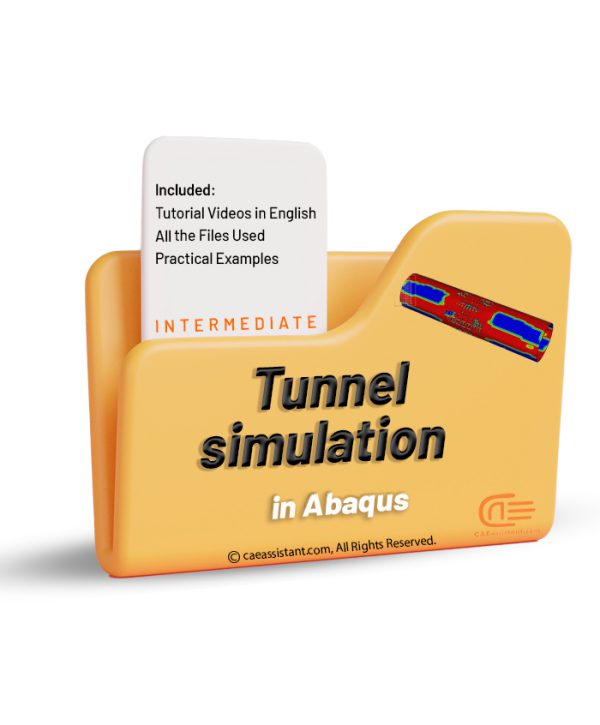
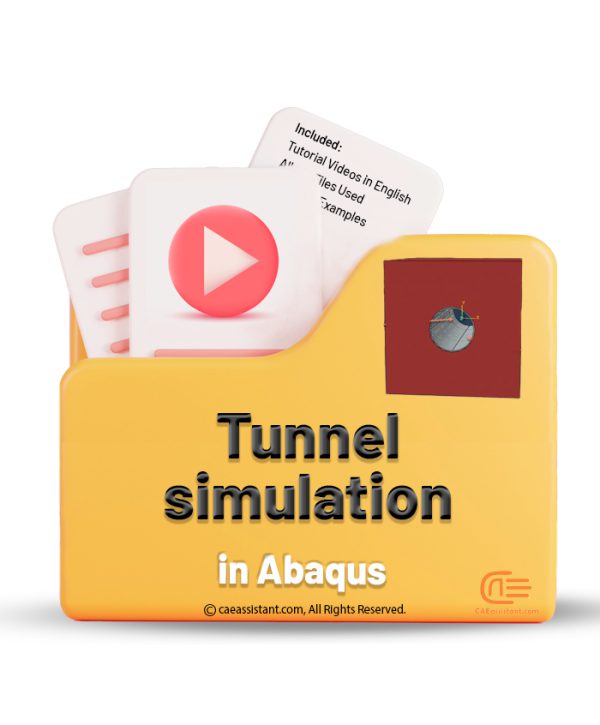
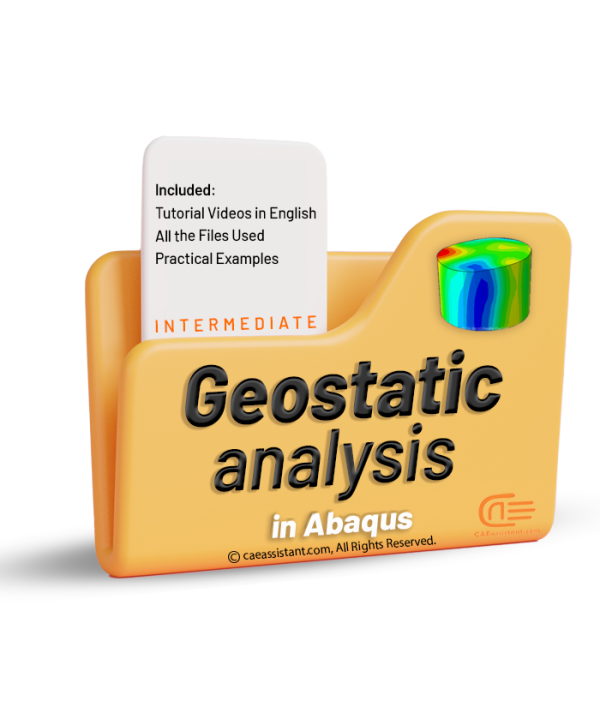
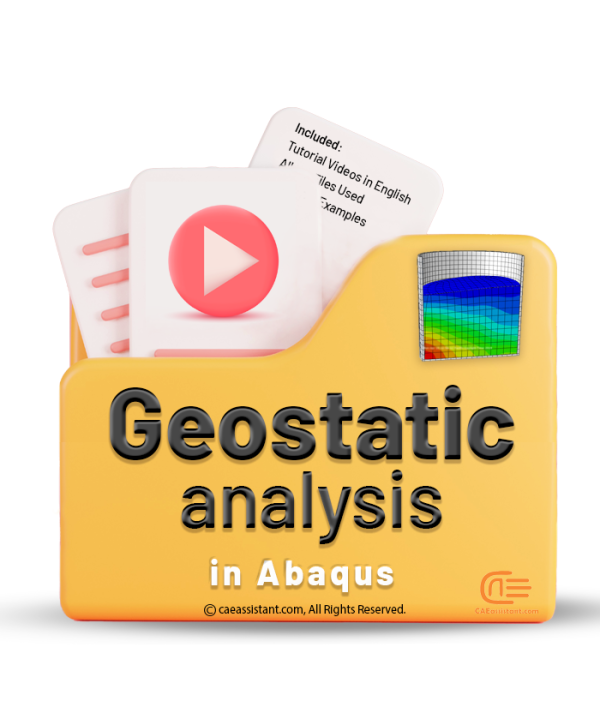
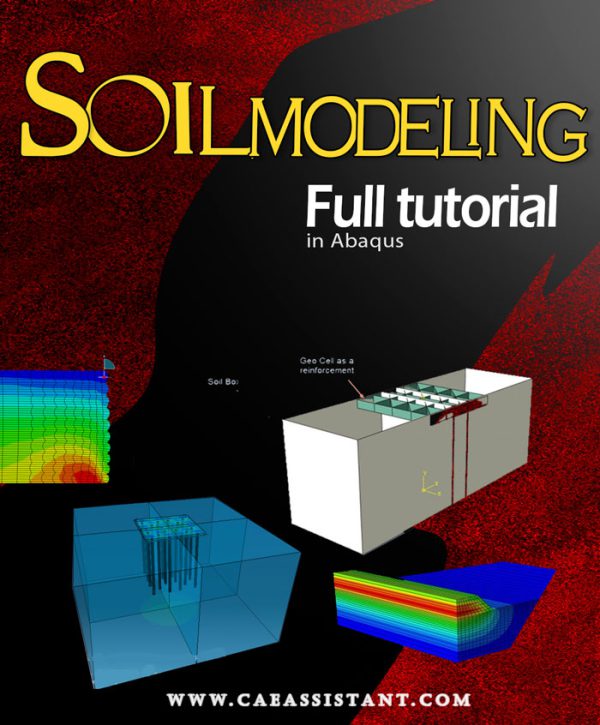

Juliette –
I want to simulate the impact effect of an explosion on granite rock and analyze the strain and stress in the rock. Is using this package beneficial for me?
Experts Of CAE Assistant Group –
Be sure it could help you with several workshops. However, please check syllabus before purchase. If you had any more question you can contact WhatsApp
Valentina –
This package has been extremely valuable and beneficial to me as an engineer and geologist. Using this package, I have been able to thoroughly investigate the behavior of rock masses under various conditions and improve safety and prevention strategies. This package has proven to be vital for the design and planning of mining operations and underground structures.
Experts Of CAE Assistant Group –
thanks for your review dear Valentina